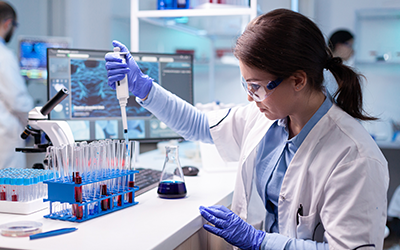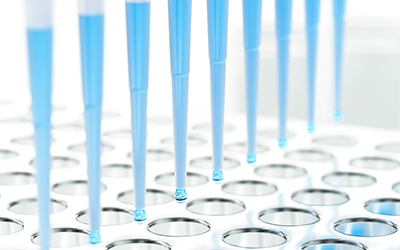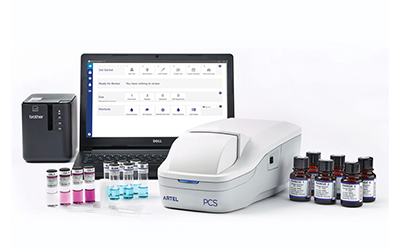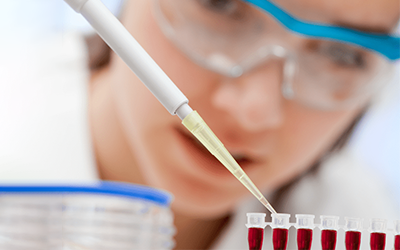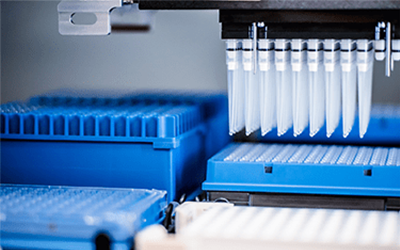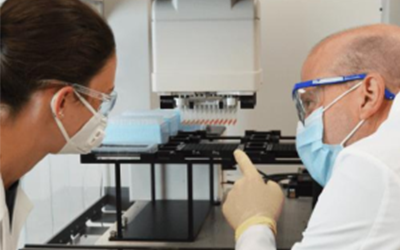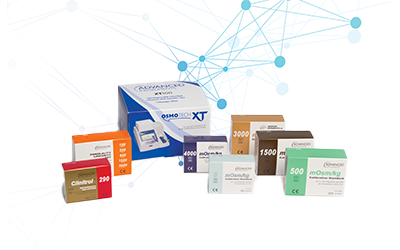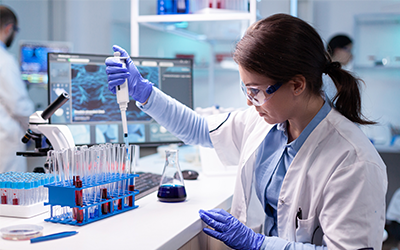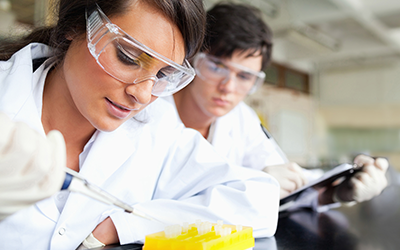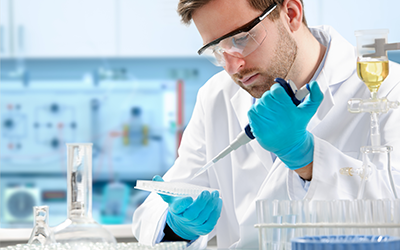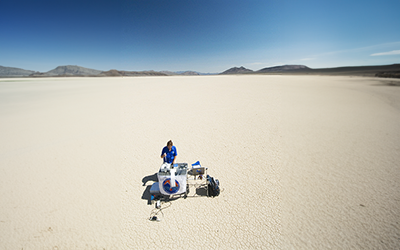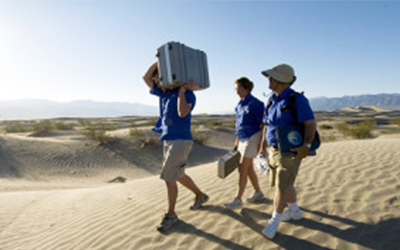Minimizing Liquid Delivery Risk: Laboratory Environmental Conditions as Sources of Error
Part 1: Barometric Pressure and Thermal Disequilibrium
The first and the third article in this series focused on manually operated pipettes as sources of error, caused either by mechanical failures¹ or induced by poor operator technique².Thorough training of pipette operators, combined with regular calibration and verification cycles to monitor the mechanical performance of pipettes are essential to prevent costly errors to any laboratory or institution. Properly devised Standard Operating Procedures (SOPs) can minimize such error sources to a large extent.
Whenever experimental results deviate from the anticipated results, it is common to examine the reagents, experimental protocol, instruments, and even the researcher’s technique for potential sources of the error. Often, the root cause can be identified this way, and subsequently be eliminated.
In light of the multitude of error sources, it is easy to overlook the environmental conditions in the laboratory, and the effects they can exert on the quantitative dispensing of liquid with handheld pipettes. This article will focus on only two of these variables: barometric pressure and thermal disequilibrium between reagents and pipettes.
Air-displacement and Positive-displacement Liquid Delivery
To understand how these environmental conditions affect the performance and operation of air-displacement pipettes, one has to understand the way these instruments operate and how they are calibrated by their manufacturers.
In mechanically operated air-displacement pipettes, a piston moves inside the pipette shaft, increasing or decreasing the air volume inside of the shaft. The air cushion, which is created inside of the pipette shaft once the pipette tip is immersed in the sample liquid, couples the piston to the liquid and affects the aspiration of the sample into the pipette tip. This mechanism allows the sample to contact only the disposable tip, thus allowing the rapid successive use of the pipette with different samples by simply changing tips.
The construction and operating principle, however, render these pipettes susceptible to variations in barometric pressure, temperature, and humidity.
This susceptibility of pipetted volumes to environmental influences is recognized in international pipette standards such as ISO 8655-2, which stipulates that pipettes must be adjusted to deliver correctly at 101 kPa barometric pressure (sea level), 50% relative humidity, and 20 °C. Furthermore, the related part six of this standard (ISO 8655-6) requires that equipment (pipette and tips) be brought into thermal equilibrium with the sample solutions by waiting at least two hours prior to performing calibration testing.
These tightly specified conditions can be met in carefully controlled calibration laboratories. The vast majority of scientists, however, often use air displacement pipettes under conditions that differ significantly from these calibration specifications.
Some liquid delivery instruments use positive-displacement rather than air-displacement. In these devices, including syringes, certain handheld pipettes and some automated liquid handlers, the piston is in direct contact with the sample to be dispensed. While these devices are largely unaffected by changes in environmental conditions, tedious cleaning procedures and the increased danger of cross-contamination are two disadvantages limiting widespread use.
Effect of Barometric Pressure
In most cases, pipettes are calibrated by their manufacturers in laboratories that operate at barometric pressures that correspond to near sea-level altitude. Many laboratories, however, are located at altitudes that are significantly above sea level. As elevation increases, barometric pressure decreases.
The scientists at Artel investigated the impact that changes in barometric pressure exert on the accuracy of pipetted volumes. A set of fixed-volume pipettes and a set of adjustable-volume pipettes, all from leading manufacturers, were tested at an altitude of 6,288 feet (over 1900 m), on top of Mount Washington in New Hampshire. The results obtained at this elevation were compared to the volumes measured in Artel’s accredited laboratory (ISO 17025) under controlled conditions at sea level in coastal Maine. The same pipettes were operated by the same technicians to minimize operator variability.
To ensure a scientifically sound comparison of the data, Artel determined the accuracy and precision of the pipettes with the PCS® Pipette Calibration System. Unaffected by differences in barometric pressure, the PCS acquires NIST-traceable data, based on the principle of ratiometric photometry, regardless of where the data collection takes place.
The dispensing accuracy of three fixed-volume micro-pipettes of commonly used volumes (200 μL, 10 μL, and 1 μL) were evaluated by two scientists who were trained and certified using the Artel Method™ (a comprehensive, science-based training suite for standardizing and optimizing pipetting skills). The data presented in Table 1 show that all of the pipettes under-delivered at high altitude, compared to the sea-level laboratory data. Figure 2 shows the under-delivery of the pipettes, after normalizing it to the laboratory data. It is evident that smaller volumes are more affected by the influence of reduced barometric pressure: the 1 μL pipette consistently under-delivered by 9%, while the 200 μL pipette under-delivered only by 1.3%. The data also demonstrate that the variation between both trained and certified operators is minimal.
The liquid delivery of three adjustable-volume pipettes (20 μL, 10 μL, and 2 μL) was investigated at their nominal volume, as well as at 10% of their nominal volume. The data for both conditions, high altitude and sea level, is summarized in Table 2, and the normalized high-altitude data are shown in Figure 2. All tested pipettes under-delivered at both volume settings when used in reduced barometric pressure. Concurrent with the fixed-volume pipettes, the results show that smaller volumes are more affected by the change in pressure than are larger volumes: while the 2 μL pipette under-delivered by 4.3% at its nominal volume, the 20 μL pipette exhibited under-delivery of less than one percent. Induced inaccuracies were found to be significantly larger when the pipettes were used at 10% of their nominal volume, with errors ranging from 3% to over 30% under-delivery.
Volume control samples were dispensed via calibrated glass syringes (200 μL, 40 μL, and 8 μL), which operate by a positive-displacement mechanism and are not sensitive to changes in barometric pressure. These controls yielded an average inaccuracy of 0.52% or less for both technicians, as shown in Table 3. This confirms that the PCS is operating within its specifications and is not affected by the change in barometric pressure due to the change in altitude.
Effect of Thermal Disequilibrium
Barometric pressure, dependent on the location of the laboratory, is only one parameter that influences the accuracy of air-displacement pipettes. As mentioned earlier, pipette calibration regulations stipulate stringent control of temperature during calibration (20 ± 0.5 °C), and that all materials, including pipettes, tips, and liquids be thermally equilibrated prior to calibration.
Such thorough thermal equilibration is difficult to achieve in a typical laboratory setting. Many common assay protocols require the dispensing of reagents that are not in the specified temperature equilibrium. Common examples are tissue culture applications, which employ reagents at 37 °C, assays with nucleic acid-based reagents at 4 °C or lower, or PCR samples transferred at 60 °C or warmer.
Artel scientists investigated the effects induced by thermal disequilibrium on volume delivery of air-displacement pipettes using the same PCS system as described above. Representing real-life laboratory situations, aqueous solutions to be pipetted were equilibrated and maintained at the desired temperatures (4 °C, 22 °C, 37 °C, and 60 °C), while the pipettes and tips were kept at ambient temperatures.
Adjustable-volume pipettes from three different manufacturers were examined, covering the commonly used volume ranges of 2-20 μL, 50-200 μL and 200-1000 μL. Each pipette was tested at volume settings close to its specified minimum and maximum volumes, using tips from the respective pipette manufacturer. At each volume setting, aliquots of the different temperatures were pipetted in alternating order, until ten data points were acquired for each sample. Systematic warming or cooling of the air cushion within the pipette shaft and tip is minimized by this regular alternation. A new pipette tip was used for every sample delivery, and the tips were not pre-wetted, so that immediately prior to the aspiration, each tip was in thermal equilibrium with the ambient laboratory air.
Acquired data of each volume/temperature combination were averaged, and the dispensed volume calculated as bias versus the ambient temperature data. Low-temperature samples were consistently delivered in excess of the set volume, regardless of the pipette or its volume setting, as shown in Figure 3. Samples thermostatted at higher temperatures than ambient were consistently under-delivered, as shown in Figure 4 (37 °C samples) and Figure 5 (60 °C samples). Figure 4
Figure 4
 Figure 5
Figure 5
It is evident from these results, that the errors induced by thermal disequilibrium are not only dependent on the temperature, but also on the set volume of the pipettes. These thermal effects are significantly more pronounced when pipettes are used at or close to the minimum specified volume setting.
These results are consistent with the thermodynamic model of the pipetting process in an air-displacement micropipette. The relationship between temperature, volume, and pressure is described by the ideal gas law [PV = nRT]. Once the tip is immersed in a cold liquid, thermal conduction begins to cool the captive air inside of the pipette, leading to a reduction of air volume inside the pipette. During aspiration, this volume discrepancy is balanced out by aspirating more liquid sample into the tip, resulting in an over-delivery of sample.
The opposite effect is encountered when immersing the tip in a warm sample: the captive air inside the tip is exposed to increased temperature and expands, resulting in the aspiration of a decreased liquid sample volume.
Adjustable pipettes set at their minimum operating volume contain the same captive air volume as those set at their maximum operating volume, but less liquid is handled. Thus, the ratio of air to liquid is increased, and an identical change of volume on the air side has a larger proportionate impact on the liquid.
Experimental results are in good accordance with this model, showing a larger discrepancy in delivered volume when pipetting volumes near the minimum specified range, as compared to the nominal volume of these pipettes.
Furthermore, the study demonstrates clearly that pipettes for small volumes (i.e. in the 2-20 μL range) are more susceptible to thermal effects than pipettes designed to handle larger volumes. Considering the larger surface to volume ratios of the smallest tips, and the larger ratio of air to liquid within the tips and shafts of these small-volume pipettes, the results are consistent with the thermodynamic model described above.
What do the Results from these Studies Mean to You?
In the vast majority of laboratories, researchers have no influence on the barometric pressure at the given location. It is important, however, that laboratory managers are aware of the effect pressure differences may have on the accuracy of pipetted volumes. Since newly purchased pipettes are calibrated to sea-level pressure, those pipettes may be out of specification on first use if the laboratory is located at higher elevations. Similar caution needs to be exercised if pipettes are shipped to a calibration service located at a different altitude than the laboratory in which the pipettes will be used. It is therefore strongly recommended to calibrate the pipettes either in the laboratory or at a location in its vicinity. It is good practice to verify pipettes shipped back from a calibration laboratory directly in the facility at which they will be used.
While scientists have significantly more control over the temperatures of samples, reagents, and pipettes, certain experimental protocols do not allow for full thermal equilibration of all components.
Therefore, researchers who are pipetting warm or cold liquids need to be aware that this technique is prone to introduce significant errors into common laboratory procedures. Cold liquids tend to be delivered in excess quantity, while warm liquids tend to be under-delivered. Depending on pipette manufacturer, volume set point, and temperature of the sample, these errors can exceed 65%, with small volumes to be affected most.
Whenever possible, it is recommended to pipette liquids that are equilibrated to room temperature. When using protocols necessitating the handling of cold or warm liquids with an air-displacement pipette, it is recommended that the researcher determine the pipette inaccuracy of the used pipette/tip/temperature combination prior to the experiment. Since it is not always feasible to determine the precise aberration from the calibrated volume at any given temperature, volume, and tip combination, everyone interpreting the data should be aware of the potentially very significant error introduced by pipetting warm and cold liquids.
While the influences of the environmental parameters discussed here were investigated on manually operated air-displacement pipettes, it should be pointed out that many automated liquid handlers operate by the same mechanism of air-displacement pipettes. While the effect of barometric pressure is less of an issue with these systems, as they are commonly calibrated on-site, operators should be aware that similar errors as reported above may be observed when transferring liquids of different temperatures.
Properly analyzing experimental results is one of the most important functions of any scientist. During such analyses, it is easy to overlook the potentially large errors that may be introduced by effects exerted on liquid handling equipment, amongst the multitude of other error sources.
When analyzing errors observed in experimental results, it is useful to keep these potential error sources in mind, in addition to the usual suspects, like contaminated reagents, experimental conditions, and instrument or operator errors, to name but a few.
____________________________________________________________________________________________________________________________
References
1 Curtis, R.H. Minimizing Liquid Delivery Risk: Pipets as Sources of Error. Am. Lab. 2007, 39(7), 8-9.
2 Vaccaro, W. Minimizing Liquid Delivery Risk: Operators as Sources of Error. Am. Lab. 2007, 39(17), 16-17.







 Figure 4
Figure 4 Figure 5
Figure 5